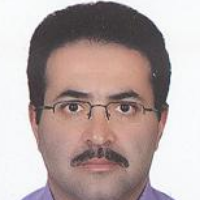Investigationof Clay Mineralogy, Micromorphology and Evolution of Soils in Bajestan Playa
Author(s):
Abstract:
Introduction
Playa is one of the most important landscapes in arid regions which covers about 1% of the world's total land area. Study of playas is important from different points of view especially pedology, sedimentology, mineralogy, environmental geology, groundwater and surface water chemistry. More than 60 playas have been identified in Iran. Considering the fact that playas and surrounding landforms are important archive of landscape evolution and paleoenvironmental variations, it seems that less attention has been paid to them so far. Soils are known as indicators of the landscapes evolution. Previous studies in arid regions of Iran imply different periods of deposition and soil formation in playa and alluvial fans or pediments. Bajestan playa is one of the known playa in northeastern Iran, and the largest clay flat exists in this playa. There is no information on the soils and their evolution in Bajestan playa. The objective of this study were to 1) identify the soils in different landforms along a transect from alluvial fan to clay in Bajestan playa 2) determine the morphological, micromorphological and mineralogical characteristics of these soils 3) determine the periods of soil and landform evolution and 4) comparison of soils evolution of the study area to other arid regions of Iran.Material and
Methods
The study area of approximately 20000 hectares is located in southeastern of KhorasanRazavi province. The climate of the study area is hot and dry with mean annual temperature and rainfall of 17.3 °C and 193 mm, respectively. Soil moisture regime is aridic with subdivisions of weak aridic and soil temperature regime is thermic. Firstly, landforms and geomorphic surfaces of the study area were recognized based on Google Earth images interpretations and field observations. Four main landforms were recognized in the study area. The landforms from north to the south of the study area were alluvial fan, intermediate alluvial fan- clay flat, pediment and clay flat. Considering the diversity of geomorphic units, 11 soil profiles were described and diffrenet soil layers and horizons were sampled. Undisturbed soil samples were taken micromorphological studies. Some horizons were selected for clay mineralogy analysis. The mineralogy of clay fraction was determined using X-ray diffraction method.Results and discution: All studied soils except the profiles in the pediment were classified in the Aridisols order. There were two geomorphic surfaces in alluvial fans. In the first geomorphic surface a soil with the Bk horizon buried a soil with red Btk horizon. In the second geomorphic surface, it seems that the erosion has been removed the overlying soil. The Bk horizon showed the maximum soil development in the clay flat and intermediate alluvial fan-clay flat landforms. Clay coating on sand in thin section was the evidence of clay illuviation in Btk horizon. Carbonate nodules associated with clay coating are the compound pedofeature in Btk horizon. These evidences reflect polygenetic nature of the soils and different period of climate change and soil formation. Smectite, mica, chlorite and palygorskite are the clay minerals in the studied soils. Similar to soils in arid regions of Iran, palygorskite was found in Bk, Bt and Bz horizons. The existence of Bk horizon in overlying soils, buried Btk horizon, removal of surface horizon in alluvial fan are the evidences of regressive and progressive of pedogenic processes in the study area. Btk horizon represents a warm and wetter and Bk horizon indicates a relatively wetter period in comparison to present time.
Conclusion
Btk was the most developed horizon in the study area that occurred as buried paleosol in alluvial fan. Bk, Bw, By and Bz were the common horizon in other landforms. Clay coating and red color of Btk horizon might seem as indicators of hot and humid conditions in the past, during the argillic horizon formation. Covered carbonate nodules with clay coating can also be mentioned as sign of a hot and wet period which is suitable for clay illuviation and weathering after a period of carbonate accumulation. The buried Btk horizon under alluvial layers in the alluvial fan indicates that after apedogenic period, alluvial processes have been responsible in burying this horizon. Bk horizon in overlying soil of all landforms represents a less intense period of soil formation. The dominant clay minerals in the study area were Illiite, cholorite, kaolinite, and palygorskite. The sequence of Bk and Btk horizons in this research and the occurrence of these soils in central, eastern and northeastern Iran imply the similar pedogenetic conditions in arid regions of Iran.Keywords:
Language:
Persian
Published:
Journal of water and soil, Volume:30 Issue: 6, 2017
Page:
2046
https://magiran.com/p1665985
دانلود و مطالعه متن این مقاله با یکی از روشهای زیر امکان پذیر است:
اشتراک شخصی
با عضویت و پرداخت آنلاین حق اشتراک یکساله به مبلغ 1,390,000ريال میتوانید 70 عنوان مطلب دانلود کنید!
اشتراک سازمانی
به کتابخانه دانشگاه یا محل کار خود پیشنهاد کنید تا اشتراک سازمانی این پایگاه را برای دسترسی نامحدود همه کاربران به متن مطالب تهیه نمایند!
توجه!
- حق عضویت دریافتی صرف حمایت از نشریات عضو و نگهداری، تکمیل و توسعه مگیران میشود.
- پرداخت حق اشتراک و دانلود مقالات اجازه بازنشر آن در سایر رسانههای چاپی و دیجیتال را به کاربر نمیدهد.
In order to view content subscription is required
Personal subscription
Subscribe magiran.com for 70 € euros via PayPal and download 70 articles during a year.
Organization subscription
Please contact us to subscribe your university or library for unlimited access!



